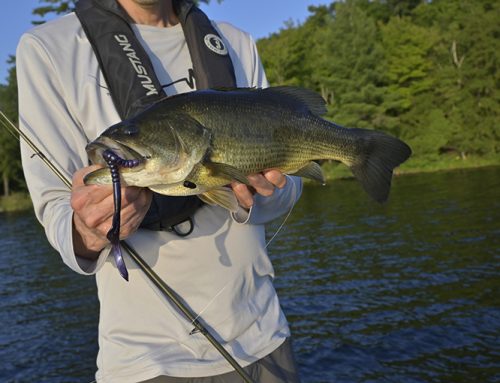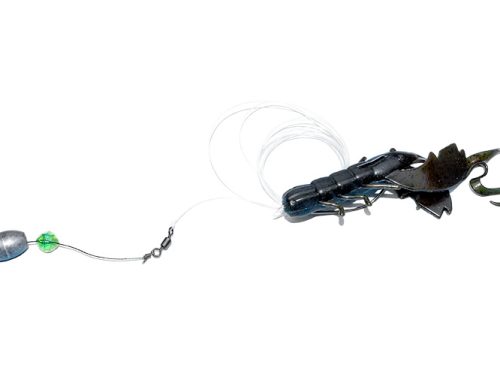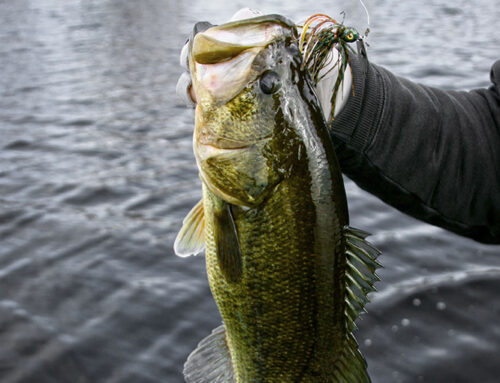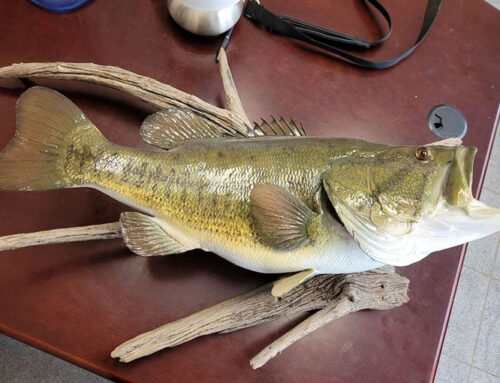Slop fishing is a productive approach for dealing with hide-and-go-seek largemouth bass. Here are the tactics needed to catch fish and allow you to add a new technique to your repertoire this bass season.
Slop defined
Largemouths utilize slop for a number of reasons: food, shade, protection, and cooler water temperatures. Slop can consist of a variety of floating vegetation, but the common components are weeds and algae. Most weeds found in slop beds have been sliced and diced by outboard-motor props, which in turn bring them to the surface. Dead and decaying vegetation are often thrown into the mix, as well.
Slop can be found anywhere it encounters resistance. It’s at the mercy of wind and wave action to propel it to a temporary resting spot. Common locations include shorelines, pad beds, docks, laydowns, and cane.
High-percentage spots
All slop is not created equal. Although large expanses of it will always hold fish, concentrate on isolated patches. These out-of-the-way areas are ideal parking spots for cruising fish and often hold the biggest ones.
Look for variations in the slop. Areas that contain structure, either above or below the surface, are more attractive to bass. Think docks, moored boats, lily pads, sunken logs, brush, and cabbage weeds.
Openings or holes in the slop are often used as ambush points. Irregularities in the outside edge often congregate more bass than those that are uniform. Key in on these high-percentage areas. Water depth is also an important consideration. As long as the water can cover the back of a bass, they can be present. Don’t pass up ultra-skinny water. Eight inches is more than enough water to hold fish. To establish where fish are holding, try a variety of depths.
Topwater
Working a surface bait across slop beds can be exhilarating. Plastic frogs such as Matzuo’s Kroaker Frog, Snag Proof Bobby’s Perfect Frog, SPRO Bronzeye Frog, and Tru-Tungsten Mad Maxx Frog are hands-down winners. Work the bait in a stop-and-go or steady cadence across the slop, letting the fish dictate the approach they like best. In order to tease a strike, pause your frog in any holes or openings.
Never set the hook on the initial splash. Wait a second or two to ensure the fish has fully engulfed the frog and turned with it.
Subsurface baits
Working the edge of slop allows you to boat additional fish, especially when they’re aggressive. Flipping jigs are ideal for this tactic.
Pitch or flip your presentation to the edge, allowing the jig to fall straight down. Most fish will suck in your bait before it reaches bottom. Hit fish hard, if this is the case, and get them moving out and away from cover. If your jig goes unnoticed, yo-yo it in place for 10 seconds or so before moving on to the next spot.
For working the inner holes in slop or to target a fish that missed your surface bait, turn to Texas-rigged plastics to get the job done. Craws, creature baits, and paddle-tail worms get the nod, and bullet weights of 1 ounce or more are often necessary to punch through thick mats.
Equipment considerations
For tossing topwaters, stick with a rod designed for frog fishing. A heavy-action frog rod between 7 and 7 feet 9 inches will work best and give you the necessary power and strength to horse fish from their sloppy homes. Baitcasting reels spooled with 60-pound-test braid complete the package.
A heavy-action flipping stick is perfect for working jigs and weedless plastics. A 7-foot 6-inch rod is an ideal length and a reel spooled with 20- or 25-pound fluorocarbon or monofilament is a preferred choice.
Top tips
- Keep topwater casts to less than 30 feet; anything more and hook-setting percentages begin to drop.
- Work from the outside in, beginning with the slop edge.
- Fish will be more active when the weather is warm. Slow down during cold fronts.
- Keep noise to a minimum; this includes movement in the boat and sound from electric motors.
- “Ski” fish across the surface of the slop to keep them from burying in the thick stuff when hooked.
- A coating of fish scent on your frog will enable it to move more easily across the scum.
- Keep a second rod rigged and within reach for missed fish.







Leave A Comment